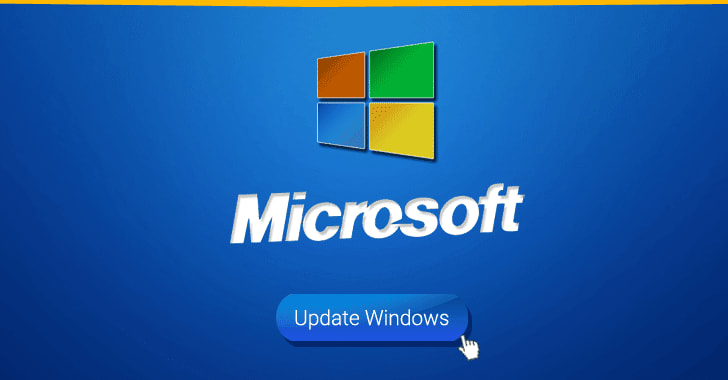Microsoft on Tuesday issued fixes for 56 flaws, including a critical vulnerability that's known to be actively exploited in the wild.
In all, 11 are listed as Critical, 43 are listed as Important, and two are listed as Moderate in severity — six of which are previously disclosed vulnerabilities.
The updates cover .NET Framework, Azure IoT, Microsoft Dynamics, Microsoft Edge for Android, Microsoft Exchange Server, Microsoft Office, Microsoft Windows Codecs Library, Skype for Business, Visual Studio, Windows Defender, and other core components such as Kernel, TCP/IP, Print Spooler, and Remote Procedure Call (RPC).
A Windows Win32k Privilege Escalation Vulnerability
The most critical of the flaws is a Windows Win32k privilege escalation vulnerability (CVE-2021-1732, CVSS score 7.8) that allows attackers with access to a target system to run malicious code with elevated permissions. Microsoft credited JinQuan, MaDongZe, TuXiaoYi, and LiHao of DBAPPSecurity for discovering and reporting the vulnerability.
In a separate technical write-up, the researchers said a zero-day exploit leveraging the flaw was detected in a "very limited number of attacks" against victims located in China by a threat actor named Bitter APT. The attacks were discovered in December 2020.
"This zero-day is a new vulnerability which caused by win32k callback, it could be used to escape the sandbox of Microsoft [Internet Explorer] browser or Adobe Reader on the latest Windows 10 version," DBAPPSecurity researchers said. "The vulnerability is high quality and the exploit is sophisticated."
It's worth noting that Adobe, as part of its February patch, addressed a critical buffer overflow flaw in Adobe Acrobat and Reader for Windows and macOS (CVE-2021-21017) that it said could lead to arbitrary code execution in the context of the current user.
The company also warned of active exploitation attempts against the bug in the wild in limited attacks targeting Adobe Reader users on Windows, mirroring aforementioned findings from DBAPPSecurity.
While neither Microsoft nor Adobe has provided additional details, the concurrent patching of the two flaws raises the possibility that the vulnerabilities are being chained to carry out the in-the-wild attacks.
Netlogon Enforcement Mode Goes Into Effect
Microsoft's Patch Tuesday update also resolves a number of remote code execution (RCE) flaws in Windows DNS Server (CVE-2021-24078), .NET Core, and Visual Studio (CVE-2021-26701), Microsoft Windows Codecs Library (CVE-2021-24081), and Fax Service (CVE-2021-1722 and CVE-2021-24077).
The RCE in Windows DNS server component is rated 9.8 for severity, making it a critical vulnerability that, if left unpatched, could permit an unauthorized adversary to execute arbitrary code and potentially redirect legitimate traffic to malicious servers.
Microsoft is also taking this month to push second round of fixes for the Zerologon flaw (CVE-2020-1472) that was originally resolved in August 2020, following which reports of active exploitation targeting unpatched systems emerged in September 2020.
Starting February 9, the domain controller "enforcement mode" will be enabled by default, thus blocking "vulnerable [Netlogon] connections from non-compliant devices."
In addition, the Patch Tuesday update rectifies two information disclosure bugs — one in Edge browser for Android (CVE-2021-24100) that could have revealed personally identifiable information and payment information of a user, and the other in Microsoft Teams for iOS (CVE-2021-24114) that could have exposed the Skype token value in the preview URL for images in the app.
RCE Flaws in Windows TCP/IP Stack
Lastly, the Windows maker released a set of fixes affecting its TCP/IP implementation — consisting of two RCE flaws (CVE-2021-24074 and CVE-2021-24094) and one denial of service vulnerability (CVE-2021-24086) — that it said could be exploited with a DoS attack.
"The DoS exploits for these CVEs would allow a remote attacker to cause a stop error," Microsoft said in an advisory. "Customers might receive a blue screen on any Windows system that is directly exposed to the internet with minimal network traffic. Thus, we recommend customers move quickly to apply Windows security updates this month."
The tech giant, however, noted that the complexity of the two TCP/IP RCE flaws would make it hard to develop functional exploits. But it expects attackers to create DoS exploits much more easily, turning the security weakness into an ideal candidate for exploitation in the wild.
To install the latest security updates, Windows users can head to Start > Settings > Update & Security > Windows Update or by selecting Check for Windows updates.




























